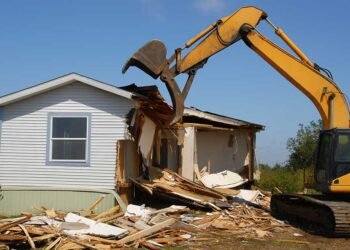Athens, renowned for its rich history and vibrant cultuland clearing athens ga, is also experiencing a modern transformation driven by urban development and expansion. As the city grows, land clearing becomes essential to pave the way for new constructions, be it residential homes, commercial buildings, or infrastructure projects.
Understanding the meticulous journey from forest to foundation reveals the complexities and importance of this process.
This article explores the step-by-step journey of land clearing athens ga, detailing each phase to provide a comprehensive overview.
1. Preliminary Planning and Permitting
The first step in land clearing is thorough planning and obtaining the necessary permits. This involves assessing the land to determine the scope of work required. Environmental impact assessments are conducted to ensure that the clearing will not harm the surrounding ecosystem. Additionally, permits from local government authorities are necessary to ensure that the project complies with zoning laws and environmental regulations.
2. Site Survey and Marking
A detailed site survey is conducted once the planning and permitting are in place. Surveyors map out the land, identifying boundaries and significant natural features such as trees, water bodies, and existing structures. This information is crucial for creating a precise plan for the clearing process. Marking the site involves delineating areas to be cleared, preserved, or protected.
3. Vegetation Clearing
The actual clearing begins with the removal of vegetation with the help of soil removal Sydney services. This phase involves cutting down trees, shrubs, and other plant life. In Athens, where preserving the natural landscape is valued, selective clearing is often practiced. This means only the necessary vegetation is removed, while significant trees and natural features are preserved when possible. The vegetation is either mulched on-site to enrich the soil or transported off-site for disposal or recycling.
4. Debris Removal and Disposal
After the vegetation is cleared, the next step is debris removal. This involves collecting and disposing of the felled trees, branches, and other organic material. In Athens, there is a strong emphasis on sustainable practices, so much of this debris is recycled. Wood can be processed into lumber, mulch, or biomass for energy production. Non-recyclable materials are disposed of in accordance with local regulations to minimize environmental impact.
5. Soil Preparation and Grading
With the site cleared of vegetation and debris, soil preparation and grading commence. This step involves leveling the ground and preparing the soil for construction. Grading is essential for ensuring proper drainage and a stable foundation. Heavy machinery such as graders and excavators are used to move and compact the soil. In Athens, where soil erosion can be a concern, erosion control measures such as silt fences and retaining walls are often implemented.
6. Utility Installation and Final Inspection
The final phase of land clearing in athens, ga, involves installing necessary utilities and conducting a thorough inspection. Utility installation includes laying down water lines, sewage systems, and electrical conduits. This step ensures the site is fully equipped to support future development. After utility installation, a final inspection is conducted to ensure the land clearing is completed according to plan and regulatory standards. Inspectors check for proper grading, erosion control measures, and compliance with environmental guidelines.
The journey from forest to foundation in Athens involves meticulous planning, responsible environmental practices, and precise execution. Each step, from preliminary planning to final inspection, is crucial for ensuring a successful and sustainable land-clearing process. This comprehensive approach ensures that the city’s expansion is both progressive and responsible, paving the way for a harmonious blend of urban growth and natural preservation.












